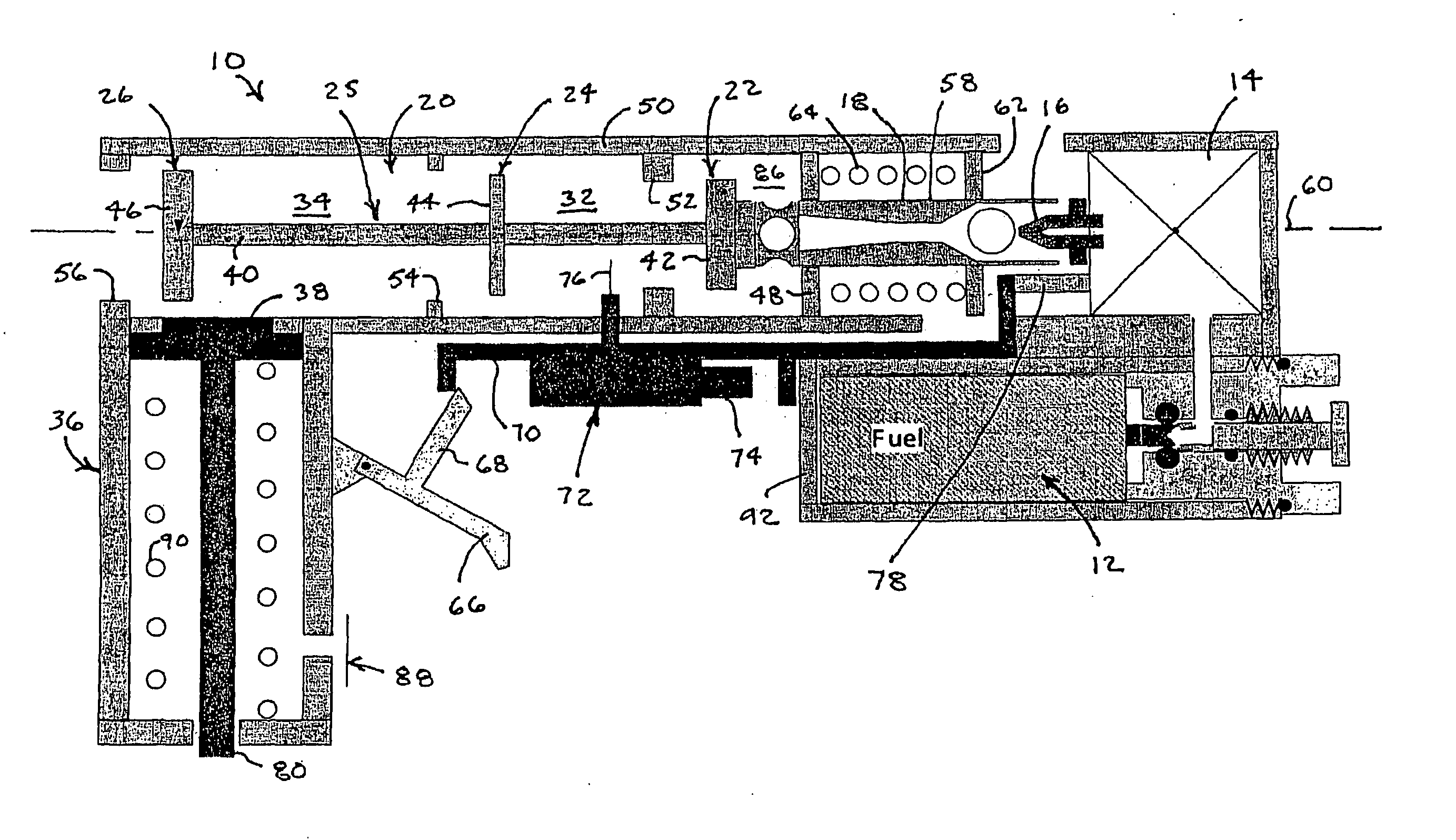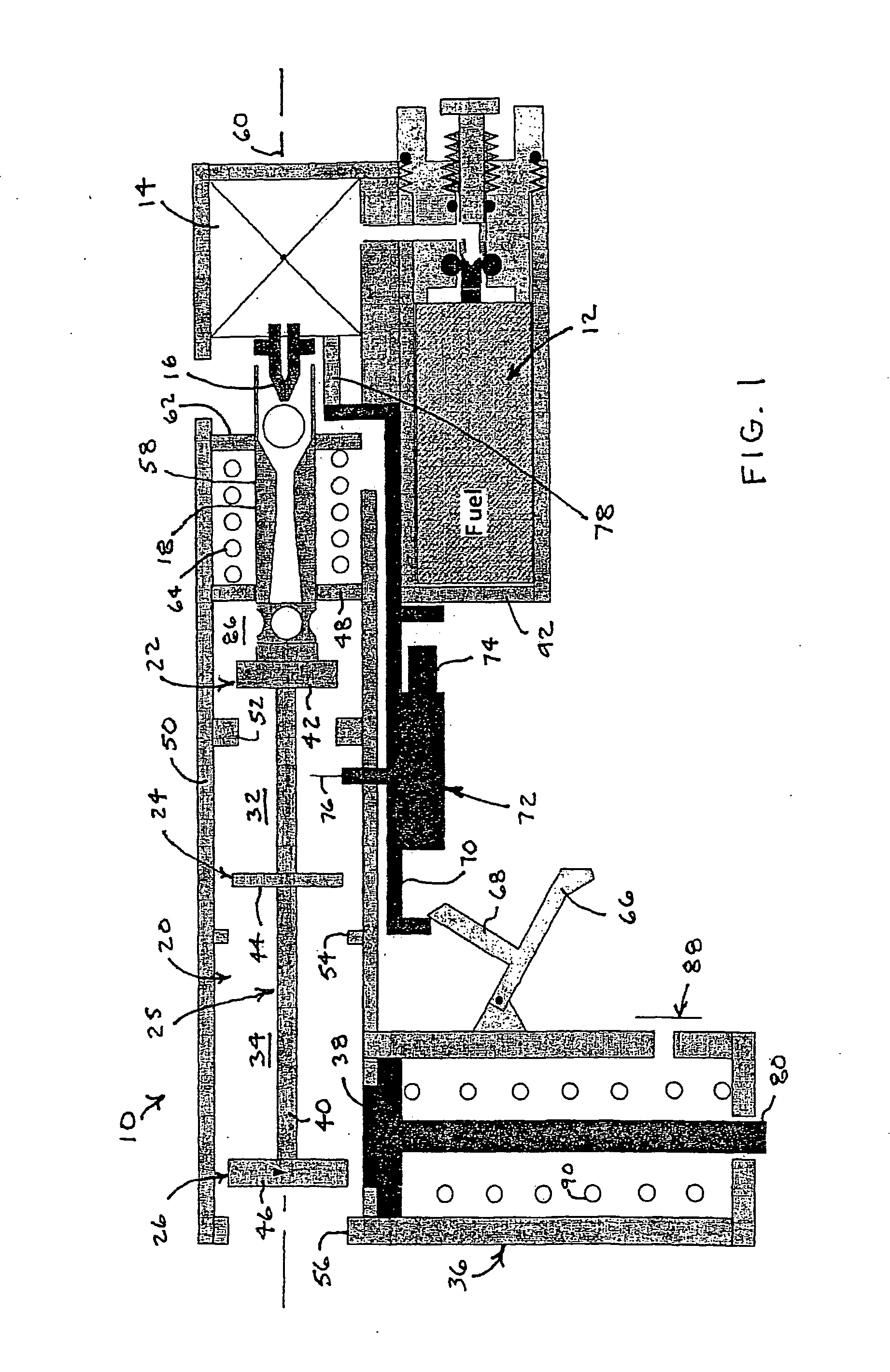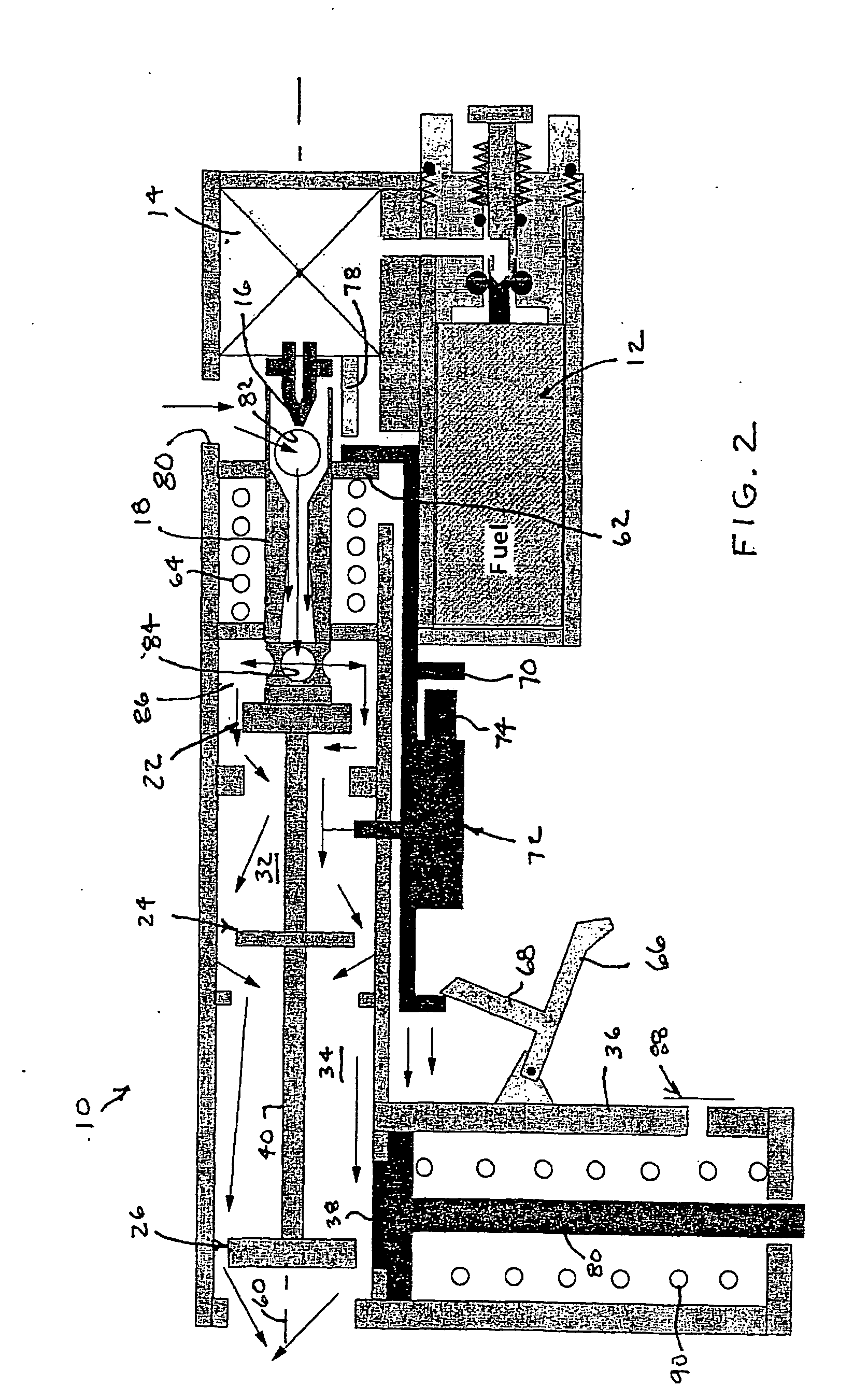Gas-powered tool motor
a tool motor and gas-powered technology, applied in the field of linear motors, can solve the problems of reducing charging and discharging efficiency, bypass valves add to the design complexity of linear motors,
- Summary
- Abstract
- Description
- Claims
- Application Information
AI Technical Summary
Benefits of technology
Problems solved by technology
Method used
Image
Examples
Embodiment Construction
[0048]A gas-powered tool motor 10, such as might be used for driving fasteners, appears within FIGS. 1-4 in various stages of operation. Beginning at a dormant state shown in FIG. 1, the tool motor 10 includes a regulated fuel supply 12 and a fuel injector 14 for injecting a metered amount of fuel through a nozzle 16 into an air-drafting jet pump 18 for delivering a mixture of fuel and air into a compound combustion chamber 20. The mixture of fuel and air enters the compound combustion chamber 20 through an intake valve 22 and spent exhaust gases exit the compound combustion chamber 20 through an exhaust valve 26. A control valve 24 divides the compound combustion chamber 20 into a pre-combustion chamber 32 and a main combustion chamber 34.
[0049]The compound combustion chamber 20 is preferably housed in the handle (not shown) of a tool. A cylinder 36 containing a displaceable power piston 38 is preferably oriented at a right angle or other orientation with respect to the compound co...
PUM
 Login to View More
Login to View More Abstract
Description
Claims
Application Information
 Login to View More
Login to View More - R&D
- Intellectual Property
- Life Sciences
- Materials
- Tech Scout
- Unparalleled Data Quality
- Higher Quality Content
- 60% Fewer Hallucinations
Browse by: Latest US Patents, China's latest patents, Technical Efficacy Thesaurus, Application Domain, Technology Topic, Popular Technical Reports.
© 2025 PatSnap. All rights reserved.Legal|Privacy policy|Modern Slavery Act Transparency Statement|Sitemap|About US| Contact US: help@patsnap.com



